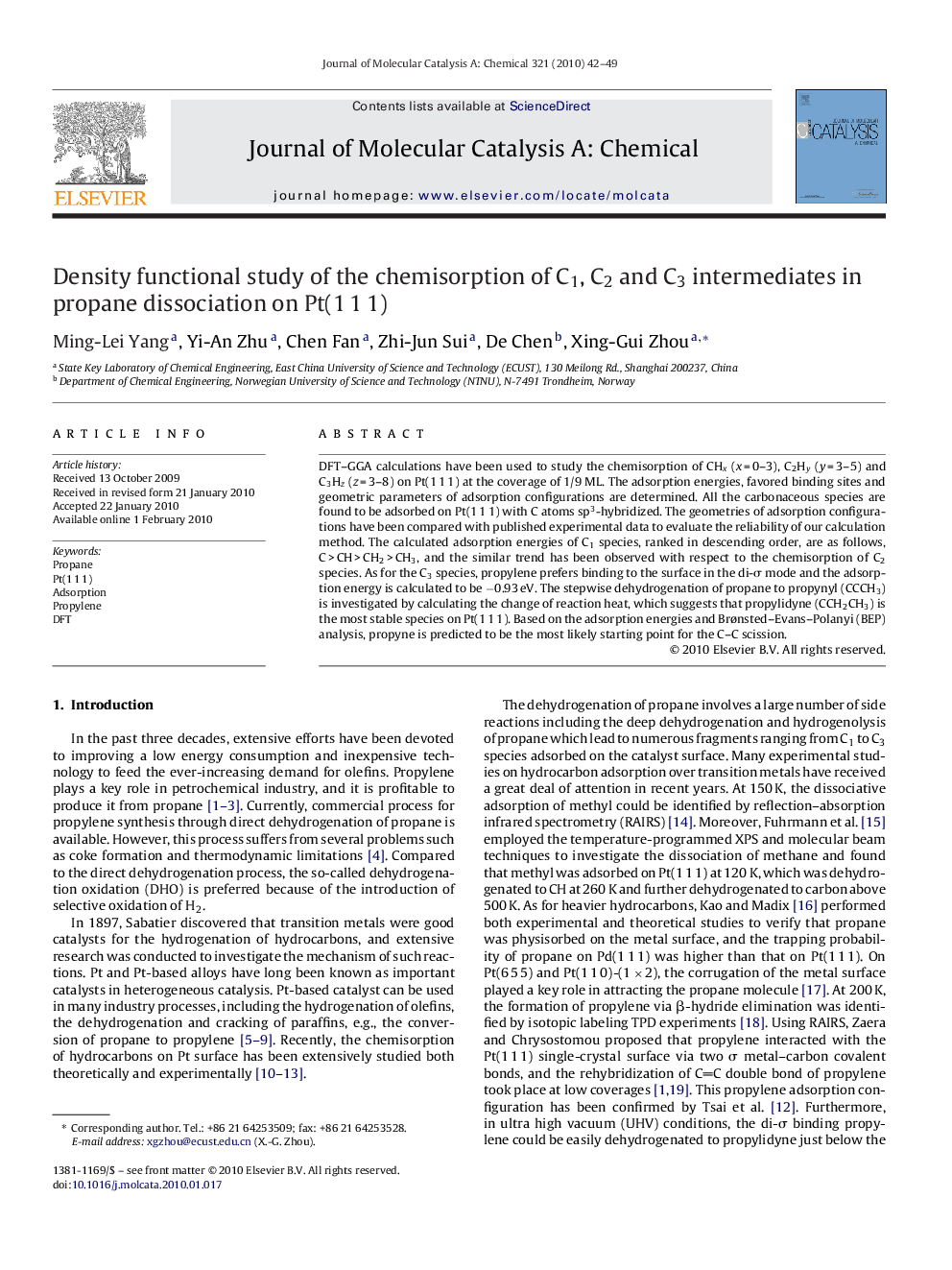| Article ID | Journal | Published Year | Pages | File Type |
|---|---|---|---|---|
| 66786 | Journal of Molecular Catalysis A: Chemical | 2010 | 8 Pages |
DFT–GGA calculations have been used to study the chemisorption of CHx (x = 0–3), C2Hy (y = 3–5) and C3Hz (z = 3–8) on Pt(1 1 1) at the coverage of 1/9 ML. The adsorption energies, favored binding sites and geometric parameters of adsorption configurations are determined. All the carbonaceous species are found to be adsorbed on Pt(1 1 1) with C atoms sp3-hybridized. The geometries of adsorption configurations have been compared with published experimental data to evaluate the reliability of our calculation method. The calculated adsorption energies of C1 species, ranked in descending order, are as follows, C > CH > CH2 > CH3, and the similar trend has been observed with respect to the chemisorption of C2 species. As for the C3 species, propylene prefers binding to the surface in the di-σ mode and the adsorption energy is calculated to be −0.93 eV. The stepwise dehydrogenation of propane to propynyl (CCCH3) is investigated by calculating the change of reaction heat, which suggests that propylidyne (CCH2CH3) is the most stable species on Pt(1 1 1). Based on the adsorption energies and Brønsted–Evans–Polanyi (BEP) analysis, propyne is predicted to be the most likely starting point for the C–C scission.
Graphical abstractThe side reactions in propane dehydrogenation process yield many intermediates, including the C1, C2 and C3 species. This paper presents the favored adsorption configurations of all the reaction intermediates on Pt(1 1 1). Based on the adsorption energies and Brønsted–Evans–Polanyi (BEP) analysis, the energetically preferred product and favored reaction pathway can be obtained.Figure optionsDownload full-size imageDownload high-quality image (20 K)Download as PowerPoint slide
